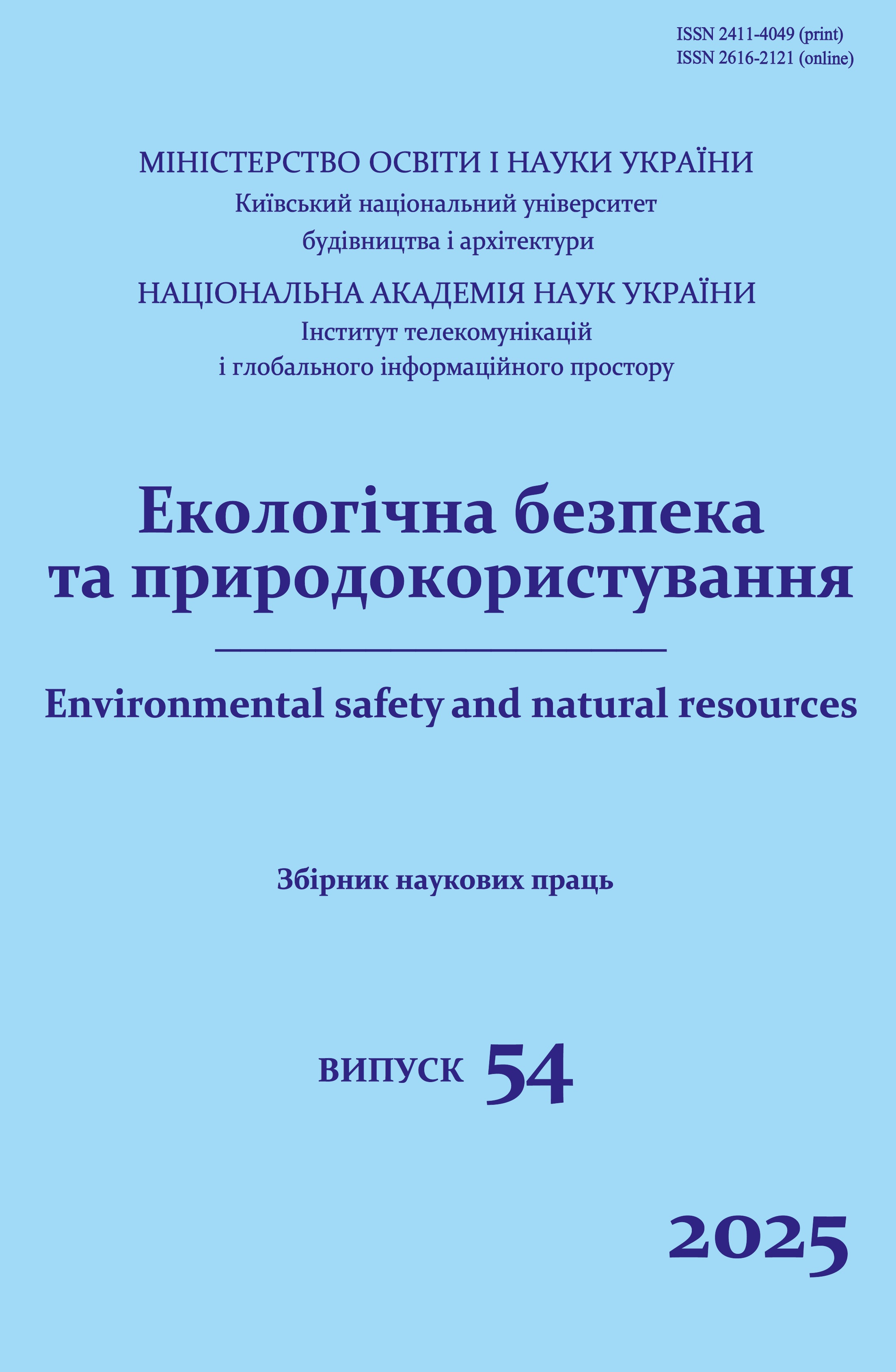Possible models of regional environmental and economic assessment of engineering and geological hazards impact on the stability of buildings and structures
DOI:
https://doi.org/10.32347/2411-4049.2025.2.84-100Keywords:
ecological and economic assessment, regional impact scenarios, engineering and geological hazards, dangerous exogenous geological processes, buildings and structuresAbstract
The article presents the results of justification of analytical tools for calculating the regional ecological and economic assessment of engineering and geological hazards impact on the stability of buildings and structures. Methodological approaches to performing an economic assessment of the negative impact of an engineering and geological factor on the stability of buildings based on determining the amount of caused or potential damage are considered. It is established that such an assessment is advisable to carry out within the framework of "cost" approach to the real estate objects assessment (based on the book or replacement value of the building), supplemented by "scenario" and "geoecological" approaches to identifying existing engineering and geological threats. The definition of geoecological scenarios reflecting the options for negative impact of seismicity and dangerous exogenous geological processes (hazards) and their territorial combinations allows, in the first approximation, to circumvent the unresolved issues of probability of these threats realization and predicting the degree of damage or destruction of structures as a result. The regional geoecological scenarios we have developed and the assessment models created on this basis reflect almost all mutually exclusive options for the territorial combination of engineering and geological hazards in Ukraine. However, due to the lack of data on the actual damage at the regional level, it was necessary to limit ourselves to a simplified indirect assessment of the hypothetical possibility of damage to structures based on available cartographic materials. It was emphasized that only the accumulation of databases on engineering characteristics, engineering and geological conditions, damage by causes, balance sheet and market value, etc. for all existing structures and buildings can radically improve the state of affairs with the assessment at the regional level.
References
Pazynych, V. I., & Svystun, L. A. (2009). Valuation of real estate: tutorial [for students of higher education institutions]. Kyiv: Center for Educational Literature. ISBN 978-966-364-891-0
Kvach, Ya. P., Smentyna, N. V., Ulibina, V. O., & Andreichenko, A. V. (2013). Business and real estate valuation: teaching aids. (V. R. Kucherenko, Ed.) (2nd ed.). Odesa: Astroprint.
Krupka, Ya. D. (2000). Progressive methods of assessment and accounting of investment resources. Ekonomichna dumka, (1), 350-354.
How a house is evaluated: required documents and evaluation criteria. Retrieved from https://pareto.com.ua/ua/blog/yak-provoditsya-ocinka-budinku/
Ivchenko, O. Basic methods of real estate valuation and their features. Retrieved from https://pareto.com.ua/ua/blog/osnovni-metodi-oczinki-neruhomosti-ta-yih-osoblivosti/
National Standard of Ukraine Б В.1.1-28: 2010. (2011). Protection against hazardous geological processes, harmful operational influences, and fire. Kyiv: Ministry of Regional Development and Construction of Ukraine, 79 p. [in Ukrainian].
Leggett, R. (1976). Cities and geology. Moscow: Mir [in Russian].
Rogozhin, O. G., Yakovlev, E. O., & Kreta, D. L. (2023). The updated electronic map of the overwetting manifestation and development by causes in Ukraine. Environmental safety and natural resources, 2 (46), 124-137 [in Ukrainian].
Turinov, O. The cost of building a house in Ukraine in 2021. Retrieved from https://z500.com.ua/ua/skolko-stoit-stroitelstvo-doma.html
Karamnova, M. How much does it cost to build a house in Ukraine in 2025. "New House". 06.01.2025. Retrieved from https://noviydom.com.ua/uk/skilky-koshtuye-pobuduvaty-budynok
The price of building a private house. DEWPOINT Company. https://dewpoint.com.ua/uk/cena/
Pilypenko, Ya. How much does a square meter of reconstruction cost? 22.05.2024. Retrieved from https://dozorro.org/blog/skilki-koshtuye-kvadratnij-metr-vidbudovi
«Khrushchovka». 21.10.2019. https://rise.lviv.ua/content/article-item/hrushtovka-13.html
The price of land is increasing, the cost of 1 hectare of land is already 45 thousand UAH. 19.04.2024. Retrieved from https://superagronom.com/news/18814-tsina-na-zemlyu-zrostaye-vartist-1-ga-zemli-vje-45-tis-grn
Roztreopa, V. How much does 1 acre of land for development cost in Ukraine in 2024. 31.07.2024. Retrieved from https://24tv.ua/agro24/zemlya-pid-zabudovu-skilki-koshtuye-1-sotka-2024-ukrayini_n2608282
Downloads
Published
How to Cite
Issue
Section
License
Copyright (c) 2025 Oleksiy Rogozhin, Victoria Trofymchuk, Ievgen Khlobystov

This work is licensed under a Creative Commons Attribution 4.0 International License.
The journal «Environmental safety and natural resources» works under Creative Commons Attribution 4.0 International (CC BY 4.0).
The licensing policy is compatible with the overwhelming majority of open access and archiving policies.

